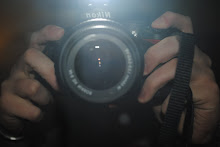Working title (max 25 words)
Why We Buy?
An investigation into how important the role of aesthetic branding is to a successful business.Summary (max 250 words)
Aims: Why are you doing this? (Max 100 words)
I have chosen to do this topic as most importantly it is something that interests me. The ideas behind the reasoning tie in to my specialty of graphic design quite closely. This topic would make me look a lot closer at the way I use branding effectively as it has to be aimed at such a variety of people in some cases but then at a very narrow target market in other cases. Small businesses are the most likely people to benefit from this as branding is usually something that is expensive and unavailable to companies that aren’t on a larger scale. This research I believe would be aimed more at the wider audience as it probably a topic that wouldn’t have occurred to them before. I hope to make the idea of good design simpler to understand and that people will use these examples and apply them to their practice as well.
Objectives: What will you produce? (Max 100 words)
With this dissertation:
- I aim to produce an analysis of processes that large and small businesses use in their companies self-promotion.
- I aim to look at product photography and how they portray their product as well as their selves through a number of methods, such as branding, foreign branding and advertising.
- In terms of advertising I will look at in store/out store, TV and viral advertising and in what ways they differ.
- I aim too look at the public’s perception of companies and what they believe are their ethics.
I will also look at how the appearances of a business influence the public’s views on them.Keywords (min 5 and max 10)
Advertising. (Foreign) Branding. Marketing. Public. Perceptions. Aesthetics. Influence.
Annotated Bibliography (min of 12 books, articles, websites)
- BBC. 2010. The Foods that Make Billions – Liquid Gold. [video online] Available at: <http://www.bbc.co.uk/iplayer/episode/b00w8cll/The_Foods_that_Make_Billions_Liquid_Gold< [Accessed 1 December 2010].
This is an extremely interesting documentary on the marketing and advertising of bottled water. The programme’s key points are that companies are making billions off something that people don’t actually need.
- BBC. 2010. The Foods that Make Billions – The Age of Plenty. [video online] Available at:
This documentary looks at the huge business of breakfast cereals and the main factors that contribute to their success. The importance of advertising and branding is explored as well as their history.
- Berger, A. A., 2003. Ads, Fads and Consumer Culture. 2nd ed. USA: Rowman & Littlefield.
This book looks at marketing strategies, the role of sex and advertising, consumer culture, political advertising and an overview of advertising in America.
- Brierle ,S., 2002. The Advertising Handbook. 2nd Ed. New York: Routledge.
This book has some key information on the processes of advertising, market research and persuasion techniques.
- Carafoli. J. F., 1992. Food Photography and Styling: How to Prepare, Light, and Photograph Delectable Food and Drinks. Edition. New York: Amphoto.
This text is a reference for how to photograph food, liquids and steam to make them look most appealing. This is an important process for businesses as they need their products to look perfect for them to sell. Lighting techniques and trade tips are discussed in detail.
- Campbell, B., 2003. Would You Like Umlauts With That? [online] Available at:
This article takes a look at the use of foreign branding as a marketing technique. The use of the umlaut in branding is explored and cases of its use in business are shown. The study focuses on Haagen Dazs, IKEA and Moben Kitchens.
- Clegg, A., 2005. Growing Pains Small Businesses. [online] Available at:
This article looks at small niche brands that after gaining global success are trying to keep the same small business ethics and appearance that gained them the success in the first place.
- Gladwell, M., 2000. The Tipping Point. London: Little Brown. Ch. 4.
This chapter looks at the broken window theory. It implies that if there is a broken window on a building that is not repaired then people will assume no one cares and then this will spread to the street.
- Jury, D., 2010. What is Typography? (Essential Design Handbooks). Switzerland: RotoVision.
This book details the historical and technical side of typography. It explores the art of typography and gives an overview of the common guidelines used when designing type.
- Pegler, M. M., 1998. Streetscapes. New York: Watson-Guptill.
This book shows and discusses a range of shop fronts from a range of different areas. It looks at a number of examples from different countries and regions.
- Pricken, M., 2008. Creative Advertising. New York: Thames & Hudson Inc.
This book show a wide range of distinctive and original advertising. It provides the hints and tip needed to create a successful campaign and illustrates the techniques used.
- Sutherland, M., 2000. Advertising and the Mind of the Consumer: What Works, What Doesn't, and Why. 2nd Edition. Crows Nest, Australia: Griffin Press.
This book looks at the reasoning behind successful and unsuccessful advertising. It also looks at the mystery of advertising and why it was so unknown for so long.


No comments:
Post a Comment